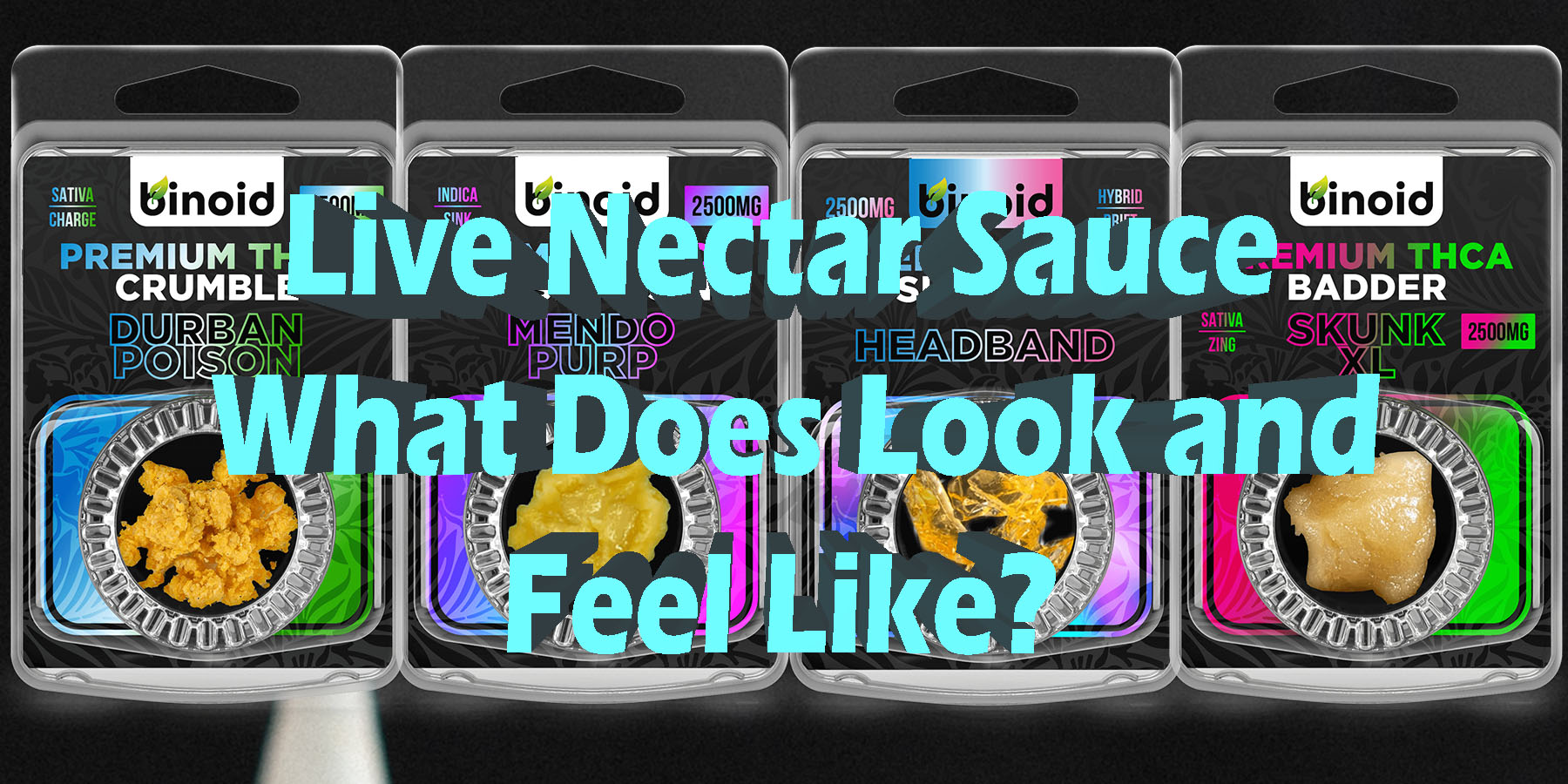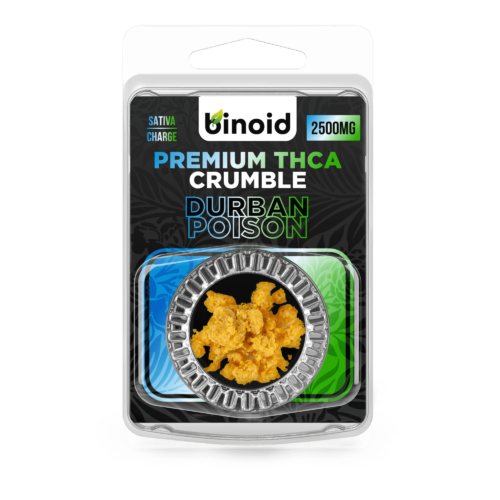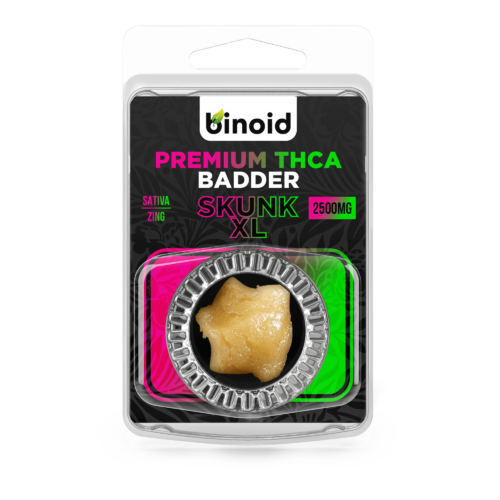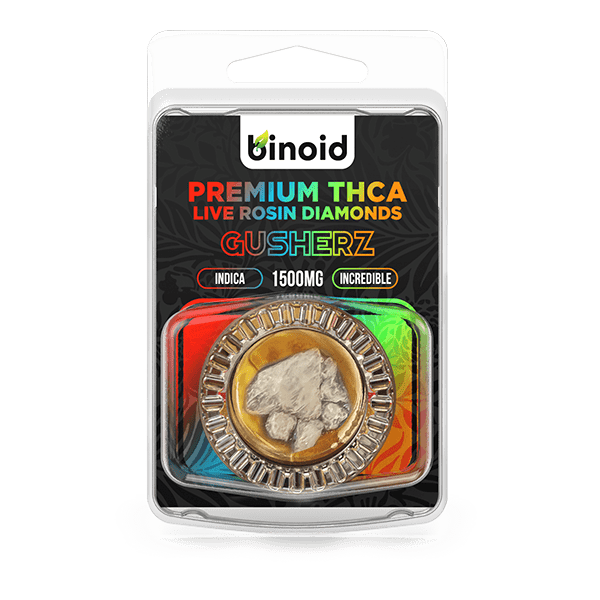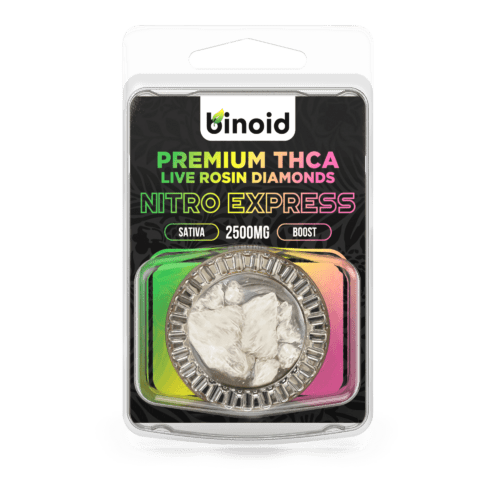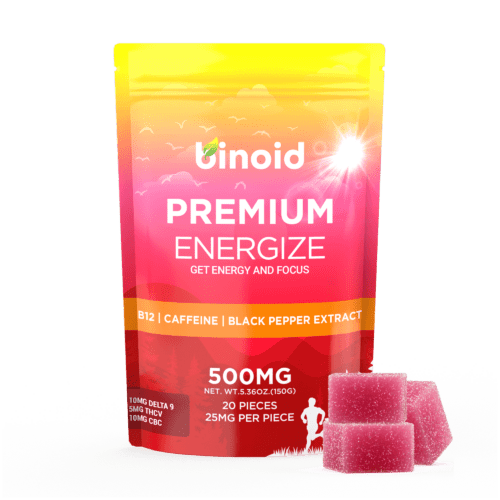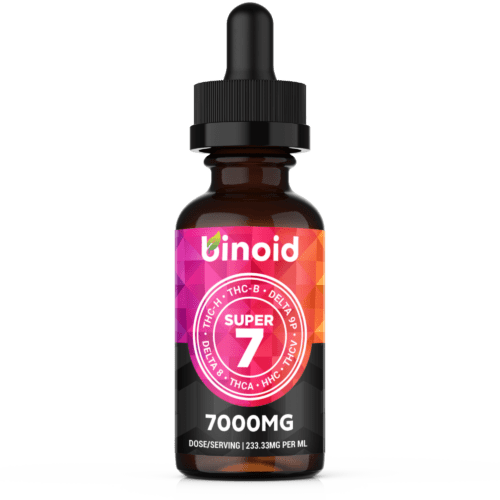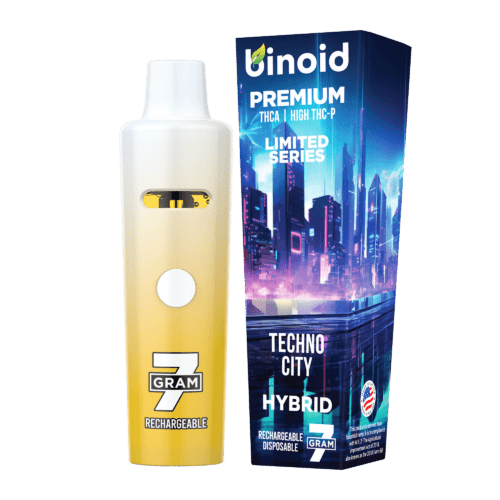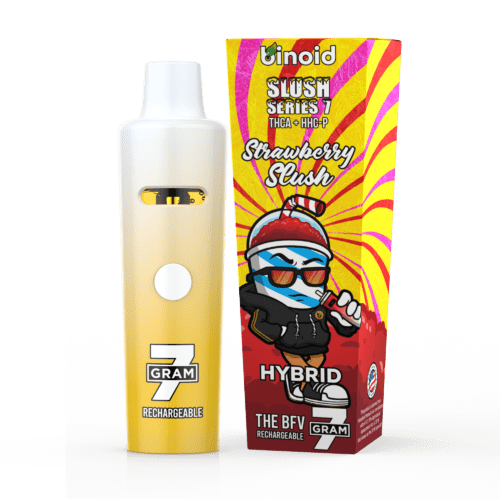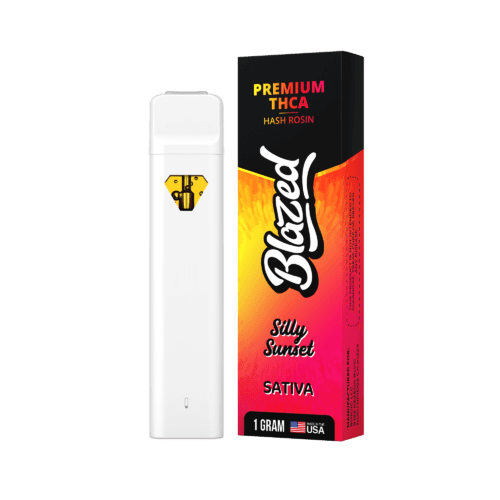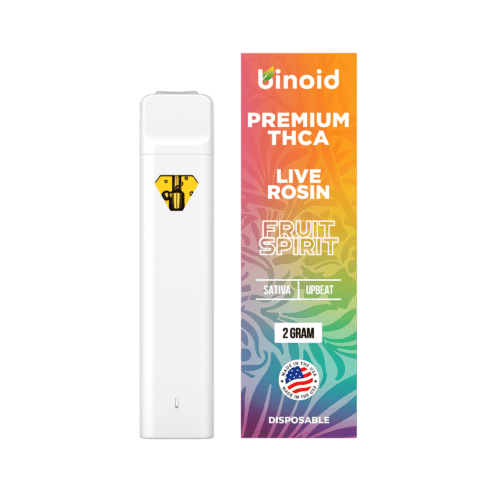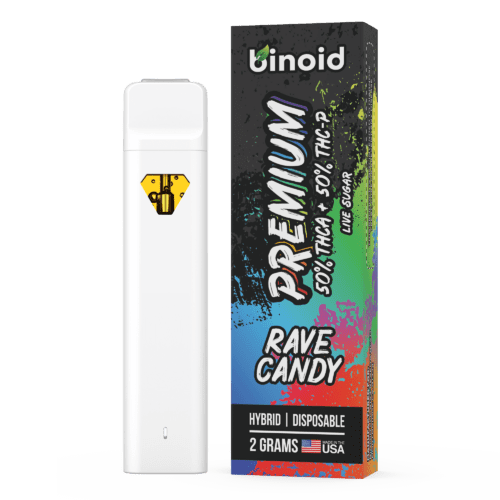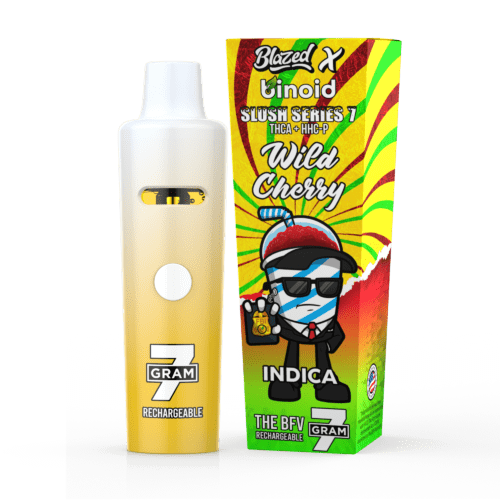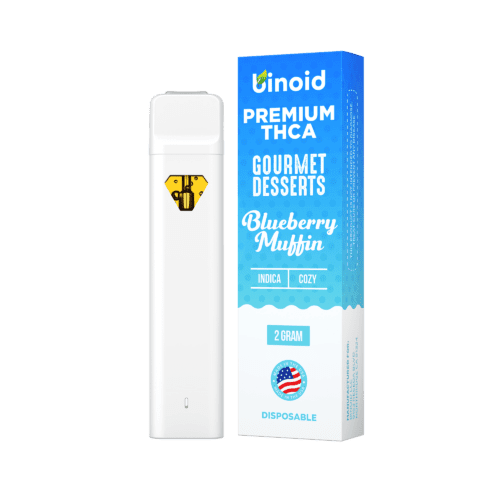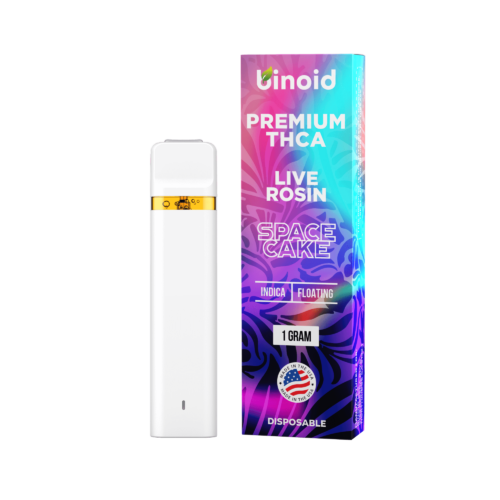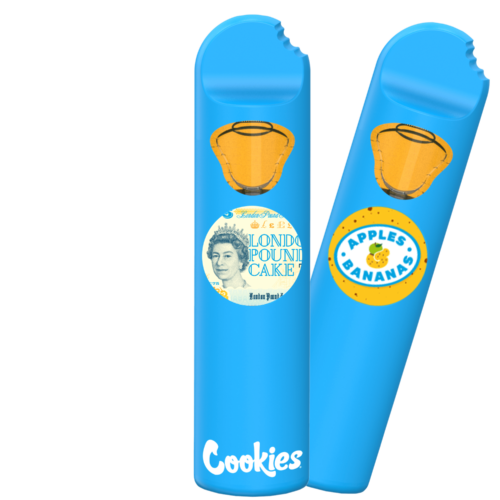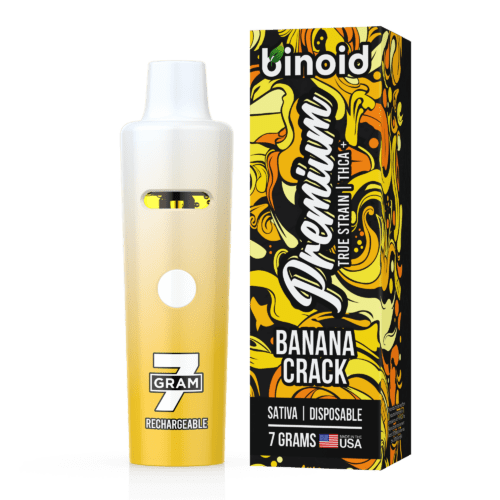Ever caught a whisper of “live nectar sauce” and found your curiosity piqued? Perhaps you’ve seen images of this intriguing cannabis concentrate, glistening like a hidden treasure, and wondered about the story behind its shimmer. It’s a substance that beckons with a promise of potent aroma and a unique texture, standing apart in an ever-evolving world of extracts.
What is it about this particular creation that captures the attention of enthusiasts and connoisseurs alike? Prepare to delve into a world where aroma, texture, and sensation intertwine, as we explore the captivating essence of live nectar sauce, a true artisan product in the cannabis landscape. That’s right folks, this isn’t just about another concentrate; it’s about understanding a specific experience, a particular profile that has carved out its own niche.
TO BUY LIVE NECTAR SAUCE CLICK HERE
Recommended products
What is Live Nectar Sauce and What Does It Look Like?
Live Nectar Sauce, often referred to simply as “Sauce” or sometimes by the broader term “Live Resin Sauce”, represents a pinnacle of cannabis concentrate craftsmanship, celebrated for its remarkable flavor profiles and potent effects. It is a type of High Terpene Full Spectrum Extract (HTFSE), which means it’s designed to preserve a significant concentration of terpenes, the aromatic compounds responsible for a plant’s distinct smell and taste, alongside a rich array of cannabinoids.
Unlike concentrates made from dried and cured cannabis, live nectar sauce begins with fresh, flash-frozen plant material. This crucial first step ensures that the volatile terpenes, which can degrade during the traditional drying and curing process, are captured at their peak, leading to a product that offers an experience remarkably true to the living plant. The “live” aspect is paramount, signifying this commitment to preserving the freshest, most vibrant expression of the cannabis strain from which it originates.
The “nectar” or “sauce” aptly describes its common visual presentation: a viscous, often glossy, and syrupy liquid component that is exceptionally rich in these preserved terpenes, frequently found intermingling with or surrounding distinct crystalline structures of THCA (tetrahydrocannabinolic acid). It is this harmonious, yet often distinct, combination of a potent crystalline cannabinoid base and an intensely aromatic liquid terpene fraction that defines the unique appeal and premium quality of Live Nectar Sauce.
Visually, live nectar sauce is truly distinctive and quite alluring, often resembling a glistening pool of golden or amber liquid with a fascinating texture. It typically consists of two discernible components: a viscous, syrupy liquid fraction rich in terpenes, and crystalline structures of cannabinoids, primarily THCA diamonds, suspended within this “sauce”. The consistency can vary, sometimes appearing more like a thick honey or jam, peppered with these shimmering crystals that can range in size from tiny grains to more substantial gems.
The color palette can also shift, influenced by the specific strain and the nuances of the extraction process, presenting hues from pale yellow to deep amber. This separation of cannabinoids into a crystalline form, while the terpenes remain in a liquid state, is a hallmark of well-made sauce, creating a visually appealing and texturally diverse concentrate that promises a complex and engaging experience for the consumer.
When It Was Discovered
The emergence of live resin, the precursor and foundational concept behind live nectar sauce, can be traced back to the early 2010s, marking a significant innovation in cannabis extraction techniques. Visionary extractors and cultivators, driven by the desire to capture the truest essence of the cannabis plant, began experimenting with ways to preserve the delicate terpene profiles often lost during traditional processing.
The pioneering efforts are often attributed to individuals like William “Kind Bill” Fenger and “Giddy Up,” who are credited with popularizing the technique of using freshly frozen cannabis material around 2011 to 2013. This shift was revolutionary because, prior to this, most concentrates were made from plant matter that had been dried and cured, a process known to diminish the more volatile monoterpenes. The realization that freezing the plant material immediately after harvest could preserve these compounds led to the birth of live resin, and subsequently, the refinement of techniques to create the distinct “sauce” consistency, where cannabinoid crystals naturally separate from the terpene-rich liquid.
Recommended products
How Cannabis Live Nectar Exactly Created
The creation of live nectar sauce is a meticulous and sophisticated process, demanding precision, expertise, and specialized equipment to achieve its signature consistency and retain the full spectrum of aromatic terpenes and cannabinoids. It’s an art form as much as it is a science, transforming freshly harvested cannabis into a potent and flavorful concentrate. The journey from living plant to glistening sauce involves several key stages, each critical to the final product’s quality.
Here’s a more detailed look at the steps involved:
Cultivar Selection, Harvesting, and Cryogenic Flash-Freezing: The entire process is predicated on starting with absolutely top-tier cannabis cultivars. These are specifically chosen for their known high trichome density, robust cannabinoid production (especially THCA), and, crucially, their unique, complex, and highly desirable terpene profiles. Immediately upon reaching peak maturity and optimal resin development, the cannabis plants (often whole plants, or more commonly, the cannabinoid-rich flowers and sugar leaves) are harvested. Within moments to a few hours of being cut, this fresh plant material is cryogenically flash-frozen at extremely low temperatures, typically ranging from -40°F down to -112°F (or -40°C to -80°C). This is achieved using specialized laboratory freezers, blast freezers, or by direct contact with dry ice (solid carbon dioxide). This rapid and deep freezing is absolutely critical: it instantaneously halts all enzymatic activity, prevents a_biotic_ degradation, and, most importantly, locks in the full spectrum of highly volatile terpenes (especially monoterpenes like myrcene, limonene, pinene) and other aromatic compounds in their original, unaltered “live” state. This step is what distinguishes “live” products from those made with air-dried and cured material, where significant terpene loss is unavoidable.
Primary Closed-Loop Hydrocarbon Extraction: This is done by doing the following:
The meticulously frozen “live” cannabis material, still at sub-zero temperatures, is carefully loaded into the material column(s) of a sophisticated, food-grade or pharmaceutical-grade closed-loop extraction system. These systems are engineered for safety and efficiency in handling volatile solvents.
Highly purified, chilled light hydrocarbon solvents – most commonly n-butane (for its efficiency in extracting a wide range of compounds), propane (for its ability to extract more volatile terpenes and often yield a lighter color), or a precisely calibrated blend of both (to leverage the advantages of each solvent) – are then passed under pressure through the packed column of frozen cannabis.
The extremely cold temperature of both the plant material and the solvent is key during this phase. It allows the solvents to selectively dissolve the desired cannabinoids (primarily THCA in its acidic form) and terpenes from the plant’s trichome glands, while strategically leaving behind a greater proportion of undesirable components like chlorophyll, waxes, and lipids, which are less soluble at these cryogenic temperatures. This results in a cleaner initial extract.
The resulting solution – a rich, golden amalgam of solvents, cannabinoids, and a full spectrum of terpenes – is then collected in a temperature-controlled collection vessel within the closed-loop system.
Recommended products
Initial Solvent Recovery and Gentle Purging: The collected solution, often referred to as a “tincture” or “miscella,” then undergoes an initial solvent recovery phase. This involves gently heating the collection vessel (often using a jacketed vessel with circulating warm fluid) while simultaneously reducing pressure with a vacuum pump. This carefully controlled process encourages the hydrocarbon solvents, which have very low boiling points, to evaporate from the extract. The evaporated solvent vapor is then recovered, condensed back into liquid form, and recycled within the closed-loop system for future extractions, making the process more sustainable and economical. The objective: remove the bulk of the extraction solvent without applying excessive heat that could degrade the delicate terpenes or prematurely decarboxylate the THCA into psychoactive THC. The consistency of the extract at this stage is typically a fragrant, oily, and viscous liquid, often termed “crude oil” or “oleoresin.”
Secondary Refinement: “Diamond Mining” or Sauce Crystallization and Separation: This is the defining stage where the characteristic structure of Live Nectar Sauce is developed, often colloquially termed “diamond mining” (if large THCA crystals are the primary goal) or simply “sauce tech.”
The partially purged oleoresin, which intentionally retains a specific, carefully controlled low percentage of residual solvent (this remaining solvent acts as a crucial co-solvent, facilitating molecular mobility and the process of crystallization), is transferred into pressure-safe vessels. For artisanal or smaller batches, these might be specially rated borosilicate glass jars (like Mason jars, though extreme caution regarding pressure safety is paramount). For larger, commercial-scale production, purpose-built, pressure-rated stainless steel “diamond miners” or crystallization reactors are employed.
These vessels are then sealed and subjected to a period of controlled rest and specific environmental conditions, often spanning several days to many weeks. This “curing” or “aging” process may involve:
Low Temperatures (“Jar Tech” or Cold Crashing): Some techniques involve chilling the sealed extract to encourage THCA precipitation and crystal nucleation.
Slightly Elevated Temperatures or Temperature Cycling: Other methods employ very gentle, consistent warmth or carefully controlled fluctuations in temperature. This can accelerate crystal growth and further encourage the separation of the terpene fraction from the solidifying cannabinoids. The terpenes, being more volatile and having different solubility parameters, naturally form a liquid layer distinct from the precipitating THCA crystals.
Over this extended period, the supersaturated THCA molecules slowly begin to arrange themselves into highly ordered crystalline lattices. As these THCA crystals grow, they “crash out” of the terpene-rich solution, leading to the distinct separation of solid “diamonds” (or smaller sugar-like crystals) and the liquid “sauce” (the high-terpene solventless fraction, or HTSF). The precise size, clarity, and morphology of the crystals, along with the viscosity and color of the sauce, are influenced by the starting strain, the residual solvent levels, temperature protocols, pressure, and the duration of the process.
Final Solvent Purging, Separation, and Quality Control: This has to be done accordingly:
Once the desired level of crystallization and separation has been achieved, the two fractions – the THCA crystals and the liquid terpene sauce – may be physically separated. This can be done by carefully pouring off the liquid sauce layer.
Both the isolated crystals and the terpene sauce then undergo a final, meticulous purging process in a high-vacuum oven. This step uses gentle heat (often not exceeding 90-100°F or 32-38°C to preserve terpenes) and deep vacuum over an extended period (24-72 hours or more) to remove any remaining traces of residual hydrocarbon solvent down to levels considered safe and compliant with industry standards (typically below detectable limits or single-digit parts per million). This final purge is absolutely essential for consumer safety and product quality.
After the final purge, rigorous quality control testing is performed by third-party analytical laboratories to confirm solvent levels, cannabinoid potency, terpene profiles, and safety (checking for pesticides, heavy metals, and microbial contaminants).
Finally, the purged THCA crystals (diamonds) and the terpene sauce are often carefully recombined in specific ratios before packaging, allowing consumers to experience the full, synergistic effect of both components. Alternatively, they might be packaged as separate products or with a clearly defined ratio of crystals to sauce, catering to diverse consumer preferences.
This painstaking, science-driven process ensures that true Live Nectar Sauce delivers an unparalleled aromatic and flavorful experience, representing the pinnacle of modern hydrocarbon extraction artistry.
Recommended products
What Does Live Nectar Sauce Feel Like – Physically and Mentally?
Experiencing live nectar sauce is often described as a multi-sensory journey, one that engages more than just the palate. Its unique composition, rich in both cannabinoids and a vibrant spectrum of terpenes, contributes to a distinctive set of sensations that can differ significantly from other cannabis concentrates. The “feel” is not just about the high it produces, but also the immediate physical interaction with the product and the nuanced ways it can shift one’s mental landscape.
It’s a holistic encounter, starting from the moment you observe its glistening texture to the lingering notes of its complex aroma, all culminating in a unique state of being. The journey often begins with an appreciation for its artisanal quality, leading into an experience that many find to be both profound and delightfully nuanced.
What Live Nectar Sauce Feels Like Physically
Physically, interacting with live nectar sauce before consumption is a unique tactile experience if one were to handle it. The “sauce” component is typically viscous, sticky, and syrupy, while the crystalline structures of THCA provide a contrasting, granular element. When consumed, typically through dabbing or vaporization, the initial physical sensation is often a burst of intense flavor that coats the palate, a direct result of the preserved terpenes.
The vapor is generally smoother and more flavorful than that of concentrates made from dried material, leading to a more pleasant inhalation experience for many. Depending on the dominant terpenes and cannabinoids, the ensuing physical feelings can range from a warm, enveloping sensation that spreads through the limbs, to a more tingling or buzzing feeling. Some users report a sense of profound physical relaxation, a loosening of tension that allows the body to feel at ease and comfortable, while others might notice a more invigorating, light-bodied sensation, especially with Sativa-dominant sauces.
What Live Nectar Sauce Feels Like Mentally
Mentally, live nectar sauce is often associated with a particularly vibrant and clear-headed experience, especially when compared to concentrates that may have a more muddled or one-dimensional effect. The high terpene content is believed to play a significant role in modulating the effects of the cannabinoids, leading to what many describe as a more nuanced and well-rounded mental journey. Users often report a heightened sense of sensory perception, where colors may seem more vivid, sounds more distinct, and a greater appreciation for subtleties in their environment.
Depending on the strain, the mental effects can range from an uplifting wave of euphoria and creative inspiration to a deep sense of calm and contemplative introspection. Many find that live nectar sauce can foster a feeling of blissful contentment and a chilled-out perspective, allowing for a temporary escape from the usual hustle and bustle of daily thoughts, ushering in a serene and often joyful state of mind.
Can Live Nectar Sauce Get You High?
Yes, unequivocally, live nectar sauce can get you high, and typically, it is known for producing a very potent and pronounced high. This is primarily due to its high concentration of cannabinoids, especially THCA, which converts to the psychoactive Delta 9 THC when heated through processes like dabbing or vaporization. Live nectar sauces are among the most potent forms of cannabis concentrates available on the market, often boasting THC percentages that can range from 50%-80% (and sometimes even higher in the crystalline THCA portions).
The ‘high’ from live nectar sauce is not just about sheer THC content, however; it’s significantly shaped by the rich entourage of terpenes, which work synergistically with cannabinoids to modulate and enhance the overall experience. This synergy, often referred to as the “entourage effect,” means that the ‘high’ can feel more complex, nuanced, and full-bodied compared to experiences with isolated THC or concentrates with lower terpene content.
Recommended products
What Can Influence Your Live Nectar Sauce High?
The journey you embark upon with live nectar sauce isn’t a one-size-fits-all adventure; it’s a highly personalized experience. Several distinct factors can weave together to shape the intensity, character, and duration of your overall high. You see, understanding these influencers can help you navigate your experiences with greater awareness and tailor your consumption to better suit your preferences and desired outcomes.
#1: Your Body Type and Tolerance to Live Nectar Sauce
Your individual physiology plays a pivotal role in how you experience live nectar sauce. Factors such as your metabolism, body mass index (BMI), and overall endocannabinoid system tone can significantly influence the onset, intensity, and duration of the effects. Someone with a faster metabolism might process the cannabinoids at a quicker rate, thus leading to a faster onset but potentially shorter duration, while the opposite might be true for someone with a slower metabolism.
Not only that, but the specific efficiency and pathways of your liver enzymes (particularly the Cytochrome P450 family, responsible for metabolizing THC), and the innate sensitivity, density, and distribution of your endocannabinoid system’s CB1 and CB2 receptors, also have a crucial and interactive role in dictating how your body absorbs, distributes, metabolizes, and ultimately responds to cannabinoids like THC and the accompanying terpenes.
Furthermore, your tolerance level, which is developed through previous cannabis consumption, is a crucial determinant. A seasoned cannabis aficionado with a substantial existing tolerance might find a standard dose of live nectar sauce to be delightfully potent and cerebrally stimulating yet perfectly manageable, whereas the very same quantity could prove to be overwhelmingly intense and possibly disorienting for a cannabis novice or an individual with only infrequent exposure to such high-THC concentrates.
This complex and dynamic interplay between your body’s unique biological predispositions and your accumulated experiential background with cannabis makes every single encounter with live nectar sauce a deeply personal and uniquely subjective event.
#2: How Much Live Nectar Sauce You Take
The adage “start low and go slow” is particularly pertinent when it comes to highly potent concentrates like live nectar sauce. The quantity you consume is one of the most direct influencers of your high. A tiny dab of sauce can be incredibly potent due to the high concentration of cannabinoids. Taking a larger dose than you’re accustomed to can lead to an overwhelmingly intense experience, potentially accompanied by less desirable effects such as feeling overly sedated or experiencing heightened sensations that might feel uncomfortable. Conversely, a very small dose might produce subtle, nuanced effects that are more manageable and enjoyable, especially for those new to concentrates or sensitive to THC. Carefully measuring your doses and gradually increasing if needed allows you to find your optimal amount for the desired experience, whether that’s a gentle wave of relaxation or a more profound journey into euphoria.
#3: The Combination of Cannabinoids
Live nectar sauce is celebrated for its full-spectrum nature, meaning it contains a wide array of cannabinoids beyond just THCA/Delta 9 THC. This complex interplay of different cannabinoids, each with its own unique properties and potential effects, contributes significantly to the overall character of the high through the entourage effect. While THCA is the primary precursor to the main psychoactive component, the presence and ratio of other cannabinoids can subtly or significantly alter the experience, making each strain and batch of live nectar sauce potentially unique in its effects. Understanding these components can offer deeper insight into the kind of journey you might expect.
THCA (Tetrahydrocannabinolic Acid): As the foundational cannabinoid in raw and “live” cannabis extracts, THCA is the non-psychoactive acidic precursor to Delta 9 THC. It is the primary cannabinoid present in the crystalline structures of Live Nectar Sauce. Upon exposure to heat through dabbing, vaping, or cooking, THCA undergoes decarboxylation, efficiently transforming into psychoactive Delta 9 THC. Its presence and concentration are therefore direct indicators of the potential Delta 9 THC potency of the traditional sauce.
Delta 8 THC (Delta-8-Tetrahydrocannabinol): Frequently synthesized from hemp-derived CBD due to its very low natural occurrence, Delta 8 THC is a psychoactive cannabinoid that is an analog of Delta 9 THC. It is widely reported by users to produce a noticeably milder, clearer, and more body-centric high, often with a reduced incidence of the anxiety or paranoia that some individuals experience with Delta 9 THC. If Delta 8 THC were to be included in a product marketed as “nectar sauce,” it would likely contribute to a more subdued, potentially more functional euphoria, offering an alternative experience profile.
Delta 9 THC (Delta-9-Tetrahydrocannabinol): This is the most well-known and primary psychoactive compound found in the cannabis plant, directly responsible for the main intoxicating effects, including euphoria, altered sensory perception, and cognitive changes. In traditional Live Nectar Sauce, Delta 9 THC is predominantly formed from the “decarboxylation” of THCA during the process of consumption. Its concentration and interaction with terpenes largely define the core intensity and specific characteristics of the classic cannabis high.
THC-B (Tetrahydrocannabutol): THC-B is a lesser-known homolog of Delta 9 THC, differing by the length of its alkyl side chain (butyl vs. pentyl). Emerging research and anecdotal reports suggest that THC-B may possess a stronger binding affinity to the brain’s CB1 receptors compared to Delta 9 THC, which could translate to significantly higher psychoactive potency. While THC-B can occur naturally in cannabis in trace amounts, it can also be synthesized. Its inclusion in any “nectar sauce” product could markedly increase the overall intensity and potentially alter the qualitative aspects of the psychoactive experience, demanding cautious dosing.
THC-P (Tetrahydrocannabiphorol): THC-P is another relatively rare but notable cannabinoid distinguished by its longer seven-term alkyl side chain. Preliminary scientific studies indicate that THC-P exhibits a dramatically higher binding affinity to CB1 receptors—reportedly over 30 times stronger than Delta 9 THC. This suggests that THC-P could be substantially more potent on a milligram-per-milligram basis than Delta 9 THC. While found in trace levels in some cannabis varieties, it is often produced semi-synthetically for inclusion in products. If present in a “nectar sauce,” even in small amounts, THC-P could lead to a very strong, long-lasting, and potentially overwhelming high, necessitating extreme caution with dosage.
HHC (Hexahydrocannabinol): HHC is a hydrogenated derivative of THC, meaning hydrogen atoms have been added to the THC molecule, altering its structure and properties. It is often produced semi-synthetically from hemp-derived cannabinoids like CBD or THC. HHC is reported to be psychoactive, with effects generally perceived by users as being somewhat similar in potency and character to Delta 9 THC, though individual experiences can vary considerably. Some users describe HHC effects as being more relaxing or body-focused. HHC is also noted for its potential increased stability and longer shelf-life compared to THC. If incorporated into a “nectar sauce” blend, HHC would contribute to the overall psychoactive load and profile of the product.
A nuanced understanding of this diverse cannabinoid landscape is increasingly crucial for consumers, as the precise combination, concentration, and ratios of these different compounds will ultimately dictate the overall character, perceived strength, duration, and subtle qualities of the high experienced from products that are marketed and sold under descriptive terms like “live nectar sauce,” especially when such products feature hemp-derived or synthetically altered cannabinoids either alongside or as alternatives to traditional cannabis-derived extracts.
Recommended products
#4: The Delivery Method of Products Using Live Nectar Sauce
How you choose to use live nectar sauce also significantly impacts the experience, primarily affecting the onset, intensity, and duration of the effects. Different delivery methods have varying efficiencies in delivering cannabinoids to your system.
Vapes: Vaping live nectar sauce that has been processed into a vape-compatible oil, be it a single vape cartridge or an all-in-one (AIO) disposable vape pen, offers a convenient and relatively discreet way to consume. The effects are typically felt quickly, usually within minutes, as the cannabinoids are absorbed through the lungs directly into the bloodstream. This method simply allows for controlled dosing, as you can take small puffs and gauge the effects. If high-quality live nectar is used as the base and it is properly formulated without excessive cutting agents, the experience can be remarkably flavorful and potent.
Using a Vaporizer (with concentrate capabilities): Employing dedicated portable electronic portable vaporizers or more robust desktop vaporizer units that are specifically designed or equipped for handling cannabis concentrates like live nectar sauce can provide a superior and highly customizable experience. These advanced devices typically offer precise temperature control, allowing users to heat the sauce to optimal vaporization points (usually between 315°F-450°F or 157°C-232°C) without reaching combustion. This controlled heating ensures efficient vaporization of cannabinoids and, crucially, the preservation and full expression of the delicate and complex terpene profile, leading to exceptionally rich flavor and a very clean, potent vapor. The onset of effects is generally quite quick, comparable to vaping cartridges, and the overall experience is often described as being pure and highly effective.
Buying Dabs for Dabbing: Dabbing remains the traditional, and for many connoisseurs, the preferred and most authentic method for experiencing pure, unadulterated Live Nectar Sauce. This technique involves using a specialized piece of equipment called a dab rig, which typically consists of a water pipe fitted with a “nail” or “banger” (commonly made of quartz, titanium, or ceramic). A small amount of the Live Nectar Sauce is applied (dabbed) onto this nail after it has been heated to the desired temperature (often between 450°F-600°F or 232°C-315°C, though low-temp dabbing is popular for flavor) using a torch or an e-nail. The intense heat instantly vaporizes the concentrate, and the dense vapor is inhaled through the water filtration of the rig. This method delivers the most intense and rapid onset of effects, often felt within seconds, and provides the truest and most unadulterated representation of the Live Nectar Sauce’s intrinsic flavor, aroma, and profound potency.
#5: That Said Product’s Strain
The product’s strain you buy makes a big difference, too. The strain refers to the terpene profile of the hemp or cannabis breed used to make the live nectar sauce, and each terpene offers distinctive characteristics that influence the flavor, aroma, and the nature of the experienced effects. Terpenes work in concert with cannabinoids to shape the overall journey. There are three main umbrella categories of strains, and within each type are countless individual strains, each with a unique chemical fingerprint that translates into a distinct experience:
Indica: Are widely known for their potential to impart a deeply mellowing effect on both mood and body. There are full Indica strains, which strongly express these classic characteristics; Indica-leaning hybrids, which retain dominant Indica qualities with some Sativa influence; and Indica-dominant strains, where Indica effects are most prominent but balanced by other attributes.
Sativa: Frequently favored for daytime activities as they are often associated with more energizing, uplifting, and cerebrally stimulating effects. Similar to Indicas, you can find full Sativa strains, Sativa-leaning hybrids that blend Sativa’s brightness with other qualities, and Sativa-dominant strains that highlight these awakening characteristics.
Hybrid: The fascinating result of crossbreeding Indica and Sativa plants, aiming to capture desirable traits from both parent lineages. This can lead to an incredibly diverse range of effects, often providing a harmonious balance between the relaxing qualities of Indicas and the uplifting nature of Sativas. Many hybrids are designed to be 50/50, offering an even keel, but they can also be bred to have ratios like 55/45, allowing for a slight lean towards either Indica or Sativa characteristics, depending on the specific genetic makeup of the crossbred strains.
#7: Your Overall State of Mind
Believe it or not, your mental and emotional state when you choose to consume live nectar sauce can significantly color your experience. This concept, often referred to as “set and setting,” suggests that your mindset (“set”) and your physical/social environment (“setting”) are crucial components of a psychoactive journey. If you approach the experience feeling calm, positive, and in a comfortable, familiar environment, you are more likely to have a pleasant and enjoyable ‘high’, where feelings of euphoria and relaxation can fully blossom.
In contrast though, if you’re feeling particularly down, agitated, or are in an unfamiliar or uncomfortable setting, the effects of the live nectar sauce might amplify these pre-existing negative feelings, potentially leading to a less desirable or more introspective experience than anticipated. So then, being mindful of your emotional baseline and choosing a time and place where you feel secure and at ease can make a substantial difference in cultivating a positive and blissful encounter with live nectar sauce.
Final Live Nectar Sauce Feelings Thoughts
The world of cannabis concentrates is vast and ever-evolving, yet live nectar sauce consistently holds a special allure, shimmering with a promise of unmatched flavor and a truly distinct journey. It’s more than just its glistening appearance or its impressive cannabinoid percentages; it’s about the holistic encounter it offers. From the moment its vibrant aroma first teases the senses to the complex symphony of sensations that unfold, live nectar sauce invites a deeper appreciation for the artistry and natural chemistry of the cannabis plant.
Each experience is a unique dialogue between the carefully crafted concentrate and your own individual being, a dance of terpenes and cannabinoids painting a fresh perspective. As you venture forth, remember, the most rewarding explorations are often those approached with mindfulness and an open curiosity, allowing the essence of the sauce to reveal its full, dazzling character.

